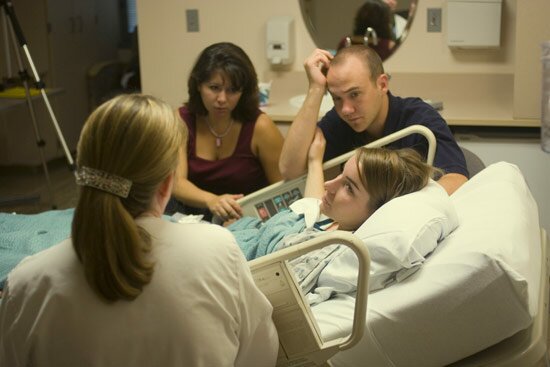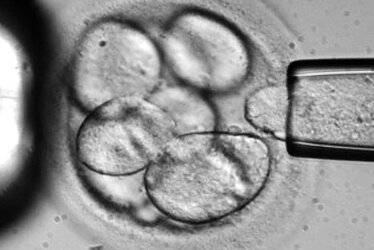Top 10 Highly Controversial Medical Issues
Suggested by SMSMedicine is one of the earliest practices and one of the most ancient sciences that humans apply in their lives. In its root, medicine opposes natural processes of selection and adaptation; thus, it puts people above other living creatures in their intelligent attempts to be influential for a healthy outcome. Various medical approaches are highly inspired by different human cultures and religious beliefs. There are many controversial issues in medicine based on ethical principles. Health care providers in their practices should balance between personal and public benefits. They should not make the situation worse by providing treatment, and they should respect a patient’s autonomy in decision about own health or life. This article identifies 10 highly controversial medical issues.
10. Blood Transfusion
This medical procedure has a long history that saved many lives as well as taking many lives in the process. Some researchers believe that successful blood transfusions were performed by the Incas tribes of South America more than five centuries ago. Their success might be based on the fact that people of the tribe probably had the same blood type.
Documented blood transfusions in Europe, started by Dr. Denys in France in 1667 with a transfusion of sheep’s blood to a human, were not always successful. The milestone discovery of different blood types in 1901 by the Austrian doctor Karl Landsteiner paved the way for safer blood transfusions. However, blood type compatibility is just one factor for complication-free blood transfusion. Different humans have a unique set of compounds in their blood that can create various immune and allergic reactions. Also, there are many life-threatening infections, including HIV and hepatitis B or C viruses that can be delivered from a donor to a recipient during a blood transfusion. Even with modern tests for blood type compatibility and possible infectious contamination, blood transfusion remains a serious procedure with careful considerations of benefits and complications. Some religious groups like Jehovah’s Witnesses oppose blood transfusion as blood is considered to be a sacred substance that cannot be transferred from one human to another.
Ideally, there would be an artificial blood free of individual human antigens and possible infections that would be compatible with anybody; it will be free of potential health hazards and will not put discomfort on personal beliefs. Practically, the main blood function of transporting oxygen is so complicated that we do not know for sure its exact mechanism and cannot yet engineer a similar artificial substance.
9. Organ Transplantation
It literally means “planting” when the organ (rare, multiple organs) is removed from one body and is placed into another (donor—recipient interaction) in order to replace the recipient’s damaged body part. The organ donor might be a brain-dead person that brings many bioethical issues about brain death definition. Often it may influence serious legal debates whether the donor or the family would indeed will to donate organs. Organ transplantation may also create criminal issues like kidnapping people and using them as potential organ donors, or illegal trade of human organs. Some experts say that there are many people in the third world countries who had to sell their kidney or part of their liver to the richer recipients from developed countries to make ends meet. However, it is not the end of possible problems connected with organ transplantation.
After the transplantation is performed, the recipients may undergo complications of organ rejection or from severe side effects of medications that are supposed to prevent various rejection reactions. This experience demonstrates a fine line between saving the recipients life and possible harm for the recipient as the result of this procedure.
8. Autopsy
This term from the Greek language translation means “see for myself” and means dissection of a corpse in order to determine a reason of the death. Autopsy allows you to investigate pathological changes in human organs and tissues, and also helps to analyze whether the correct diagnosis and treatment were provided for this person. This procedure paved its way through underestimating and prohibitions—just think of the scene at the cemetery from the Mark Twain book, “Tom Sawyer.” It took about 200 years, from the 17th to 19th century, to develop proper understanding of human anatomy and standardized autopsy protocols. However, at Western hospitals, the number of autopsies continues to decline since the middle part of the 20 century because families often do not want to give permission for autopsy on the dead loved one. Such a practice creates controversy between compliance with family wishes and possibility to investigate pathological processes and possible medical errors that could benefit other living people.
7. Physicians and Tortures
This issue is extremely controversial and usually is not widely discussed. Many physicians agree that their participation in tortures opposes the goal of medicine for better human well being. However, there is a rhetorical question–what to do if information obtained from the “bad gay” will help to save many innocent lives. Also, will the absence of the physician supervision make the torture outcome better for the tortured person? Even if there is not much information, there is speculation that some physicians cooperated with people who implemented torture processes.
6. Euthanasia
This word is composed of two Greek roots and means “good death.” In its common meaning, euthanasia is aimed to terminate the life of those people suffering from debilitating diseases. Legal definitions of euthanasia are various in different countries. Euthanasia can be voluntary (when an ill person acts to terminate own life, like taking lethal dose of certain medications) and involuntary, when an ill person receives life termination actions of another person. Euthanasia is also considered as active, when some substances given to the ill person, would terminate a life, and passive, when withhold of treatment like oxygen mask or antibiotics would be create incompatible with life situation. Active euthanasia is generally prohibited, but there is exception to this rule for children and their families in the Netherlands known as “Groningen protocol.” Euthanasia issues created two active camps of life defenders and right to die activists. Because of various cultures and religious views, euthanasia will remain very controversial theme among physicians and bioethicists. Recent death of Dr. Jack Kevorkian highlighted a physicians complicity in euthanasia.
5. Patients with Debilitating Illnesses
This issue has strong ties with euthanasia. “To treat or not to treat” certain conditions will be an issue bringing many discussions and controversies. Some health care professionals suggest that use of the huge amount of medical costs in the last 2-3 months of life for a terminally ill person creates unsustainable situation for medical funds; and in many countries, it puts the medical system into deep debt. Others argue that such statements are the health care system rationalizing. Such critics compare these medical practices with Action T4 executed by Nazi during the Second World War. Paradoxically, this Action had a name of “Euthanasia Program,” but this program definitely targeted people with severe physical or mental conditions without their consent for own euthanasia.
4. Pregnancy Related Issues
Modern medicine allows an advance degree of autonomy for a patient, meaning that a person has a right to make their own decision about own body. Autonomy opposes paternalism, when someone who knows better makes decisions. This paternalism model reflects the relationship between a father and a child when decision making is assigned to a more knowledgeable person. However, autonomy creates a great controversy when we have a deal with a pregnant woman. Her body belongs to her, but her body is also a source for the life of a new person. According to the autonomy rules, a pregnant woman may refuse any procedures, like blood transfusion or Cesarean section, even if without them her baby might die. Also, a right to perform medical abortion is based on a patient’s autonomy. This practice is a very controversial issue as health care providers should deal with two (or more lives) and often make non-beneficial for one part decisions.
3. In Vitro Fertilization
In 1978, the first child was born using test-tube techniques. This practice gave hope to thousands of people to have their own biological children if their certain medical conditions were prohibiting a couple from having children naturally. This outstanding medical achievement was recognized last year with the Nobel Prize. However, there are many critics of Dr. Edwards pioneering decision of infertility treatment. The main ethical issue was that usually many embryos should be created in test-tubes, but only a few of them are implanted into womb and develop into human. In-vitro technique creates many debates how ethical to destroy “unwanted” embryos. There are also many questions about long-term health prognoses for embryos frozen for 10-20 years and implanted into a woman after this long dormitory. Many of us also remember the story of “octo-mom”, when the woman became a mother of six, and later eight children as the result of in-vitro fertilization and implantation of multiple embryos. Many experts question the adequate decision making capacity of this woman (and the doctor who did this procedure). These critics question her ability to provide well being for her children and have concerns about health issues resulting from a very unnatural early development for these babies.
2. Embryonic stem cells
Every cell in our body has its unique functions, like a red blood cell that transports oxygen or a pancreatic beta cell that produces insulin. A human body consists of billions of cells with very specialized functions. However, all of these very different cells incredibly have just one ancestor, the very first conception cell resulting from the merging a woman’s egg and a man’s sperm. We are thrilled and do not know for sure how this single cell gives the development of billions of other cells, and how information which cell would perform a certain function is transferred. Such cells with unlimited possibilities to be developed into the certain type of cells are called stem cells. Logically, stem cells are typical for an embryo, even if many researchers try to determine the presence of stem cells in a human body later in life. The idea to use stem cells to harvest new organs and tissues sounds tremendously promising for many people whose own organs and tissues become damaged. However, the opponents of embryonic stem cell use warn us whether the price for well being of one person should be paid by the destruction of a potential life of the other person.
1. The Best Possible Health Care for Everybody
This main controversy determines future development of the medicine. New medical diagnostic and treatment techniques require huge financial investments and constant financial return to keep medical companies and health care providers in business. Ideally, it would be great to provide every person with every possible medical treatment that the person needs; practically, if the person cannot pay this fair share for themselves and for own family, how these skyrocketing medical expenses can be paid?
This article has identified 10 the most controversial medical issues. This list is not all inclusive. Each individual can add additional issues based on their expediencies. But in the end, we all agree that health care is complex, costly, and often controversial.



















